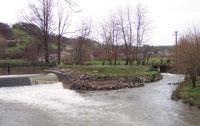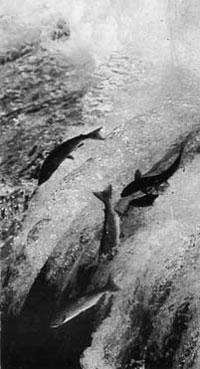Salmon in Sarrakaria
2001/04/01 Mendiburu, Joana - Elhuyar Zientziaren Komunikazioa Iturria: Elhuyar aldizkaria
To define the state of a river it is not enough to analyze the quality of the water. Rivers, like other ecosystems, are very complex and to determine if a river or river is of good quality many factors must be taken into account.
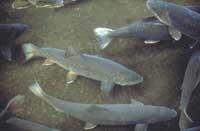
Among other things, changes in water flow, obstacles that migratory fish can find for their transit, activities in the basin, groundwater, etc. you have to keep them in mind.
Consequently, it is not always easy to assess the quality of the river, but there is a very simple and representative form. The fauna and flora of the river depend on its quality, so to make a general idea just look at the biological indicators. One of them is salmon. Because it was one of the fish that was becoming extinct in this river, he began to study and control the dynamics of salmon in Sarrakaria around 1980. This is a pioneering project initiated in collaboration between researchers of the INRA of Senpere (National Institute of Agricultural Research) and fishermen of the area, which in the last 20 years has obtained really satisfactory and valuable results.
The selection of the Sarrakaria River for this study on salmon population dynamics has simple and practical reasons. To carry out such an investigation, it has to be a river that meets two conditions. On the one hand, it is essential that it is a river with a salmon vocation and, at the same time, with a suitable size for research. In fact, rivers like Aturri and Bidasoa, with a salmon vocation, are too large for researchers to control all their fish.
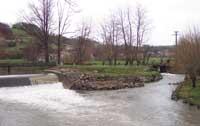
The Sarrakaria River meets both conditions. It is a river of 45 kilometers in which, in addition to the Atlantic salmon, there are seven other migratory species: sea trout, eel, elbow, corcón, platija, lamprea marina and lamprea fluvial. Between Navarra and Senpere it is a river with quite high currents and slopes, but from there the speed of the water slows considerably and the width of the river increases considerably. The entire 238 km2 basin can be monitored and controlled and it seems that agricultural production does not produce excessive pollution. The water flow is also not high, with an annual average of 5.4 m3/s, despite floods and times of drought.
Initial work and objectives
Researchers and fishermen launched the plan around 1980 with the aim of repopulating the Sarrakaria River and, at the same time, investigating the behavior of this species (how they are oriented, when they reproduce, how far they travel...) and the dynamics of the population.
In 1980 the situation of this river was quite painful; there were barely 30 mature salmon and, in addition, the Uxondoa waterfall, 4.5 km from the sea, prevented them from reaching the breeding areas. To change this situation, in addition to introducing salmon and eggs, they found it necessary to install the necessary facilities to overcome these obstacles.
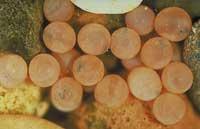
Repopulation began with the introduction in 1986 of salmon eggs and nursery salmon. Mr. Dumas, who has participated from the beginning in this project, has recognized that for lack of experience in the beginning was not very fine. As at that time the Scottish eggs were in fashion, they began to introduce them, but they realized that this was not the way. The autochthonous species has had an adaptation of years and, in addition, the Basque Country is at the limit of the southern latitude in the salmon distribution, so the number of Scottish salmon returning was much lower than that of the autochthonous. Faced with this situation, adult salmon from Scotland were quickly eliminated and started introducing salmon from the country.
Over the years, salmon – and other migratory species – placed scales in waterfalls that could not be overcome and in 1990 it was decided not to introduce more salmon. Already the natural reproduction was enough to ensure and increase the amount of salmon. In short, the goal was to continue reproducing and repopulating salmon without human intervention.
However, salmon behaviour and population dynamics have been under investigation since 1985. The work of researchers is to identify the characteristics of each stage. That is, how many eggs they produce, how many salmon come out under the stone, how many are dizzy, how many come back, how far they travel, etc. has been analyzed.
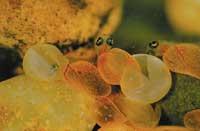
To carry out this work, the researchers have three facilities: the Uxondo trap to control salmon rises, artificial breeding facilities and the conditioning and conservation of the Lapitxuri stream for natural reproduction.
The Uxondo trap is visited twice a day to collect data on length, weight, etc. of the caught salmon. The Lapitxuri River analyzes the fertilization and embryonic phase of larva. The viewpoint is located on the banks of the river, underground. From a large glass window, adapted to the height of the riverbed, the fertilization phase and embryonic larva are observed. As has been said, they have been studying the dynamics of the salmon population on the Sarrakaria River for twenty years. They have collected a lot of data and gradually change objectives and new projects emerge.
There are still pending tasks
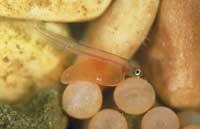
With this rich data it is intended to define the cycle model of this species. This model is due to environmental changes (water flow, suspended particles, etc.) It will be especially useful for fishing for awareness or prediction of its impact. The data of the fifteen years, differentiating each of the phases of the salmon cycle, have served to create the model and with the work of the last five years have validated the model.
The most worked impact in the larval embryonic phase is that derived from soil erosion at river margins. Soil erosion of the banks causes the proliferation of suspended particles in the water, which negatively affects salmon brushes. These materials fill the brush and choke the eggs. It should be noted that the increase in the salmon population depends largely on the results obtained in the different phases of embryonic larva.
These times are the most sensitive and the slightest change can also cause a large number of deaths. The number of surviving eggs ranges from 0.6% to 38% of those laid. As you can see, besides being a very sensitive phase, there is a great heterogeneity. The amount of eggs that survive seems to depend on the initial quality of the brush and, above all, on the upper layer.
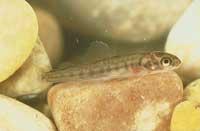
To conclude this data, they first investigate the structure of the place and perform the classifications. The first step is the removal of the brush, but it is essential to maintain the architecture in its state. Specifically, the research has been the porosity and granulometry of the brush substrate before and after fertilization and after flooding.
The proportion of fish that survive the embryonic phase of larva is deduced by two techniques. Until now, some meshes were placed on these salmon fishing brushes, but they do not find it a very suitable technique. Now, in the brushes, both natural and artificial, they introduce 15 baskets with ten eggs at 20 cm deep, and by March they see how many salmon there are in each tube.
As for the phase of young salmon, the relationship between habitat characteristics and salmon population and the annual natural production of the river is being measured. For nine years, between the months of September and October, inventories have been made in the places indicators of the river thanks to the technique called electric fishing. Taking these measurements into account, the number of young salmon surviving each year ranges from 2,000 to 10,000. Surprisingly, this amount represents less than 1.5% of the eggs that are laid. Before sea departure only 50% of the previous year's salmon remain.
Finally, they acquire the characteristics of returning salmon, such as size, weight, when they have been detected, years they have, etc. Currently, between 200 and 500 salmon are returned each year.
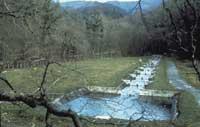
For the moment, researchers have been very satisfied with the work done, since the repopulation plan has given very good results and the model they have modeled is evolutionary and applicable to other rivers. Thus, the Sarrakaria River has become an “indicator river”. On the other hand, without limiting itself to the salmon population, from now on we are working on the execution of the so-called “river contract” to involve all the agents involved in this river, but it is not a pioneer, since the Errobi river has this type of planning.
Salmon born and died in the same stream
Salmon is a good and appreciated migratory fish of the family Salmonidae. The particularity is that after a long trip in the sea, it returns to the river of origin to reproduce and die.
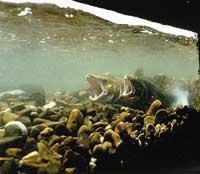
The season of fertilization usually lasts between December and January and usually salmon females reproduce only once throughout life. Salmon reproduce in shallow areas of pebbles. The females with their tails move the stones and make a brush under the stone. The larva embryonic phase lasts approximately three months, until March. The main risk at this stage is that the particles found in skiing in the water fill the brush and choke the eggs, treading tractors and mountaineers.
Three months later, the fry leaves the stones and begins to spread around. In the beginning they are directed to the currents, but as they grow, when they need more space, they extend to other places.
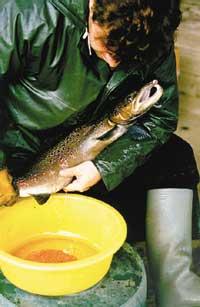
According to the growth, after one or two years they head to the sea to start a journey from six months to three years. The salmon that travel further up reach western Greenland. For their part, the fites that get quite fat, reach sexual maturity when they are close to Ireland and have no time to reach Greenland. They do not eat anything during the whole turn. They use the smell to know in which mouths they have to access the breeding place.
Of the five salmon returning to Sarrakaria, four are young salmon traveling to Ireland. The first to climb in Sarrakaria in spring are the oldest salmon, with trips in the sea between two and three years. The climb is interrupted by the arrival of the low flows of August, but after the summer break, the youngest salmon continue their ascent with the first floods of autumn.

Gai honi buruzko eduki gehiago
Elhuyarrek garatutako teknologia




